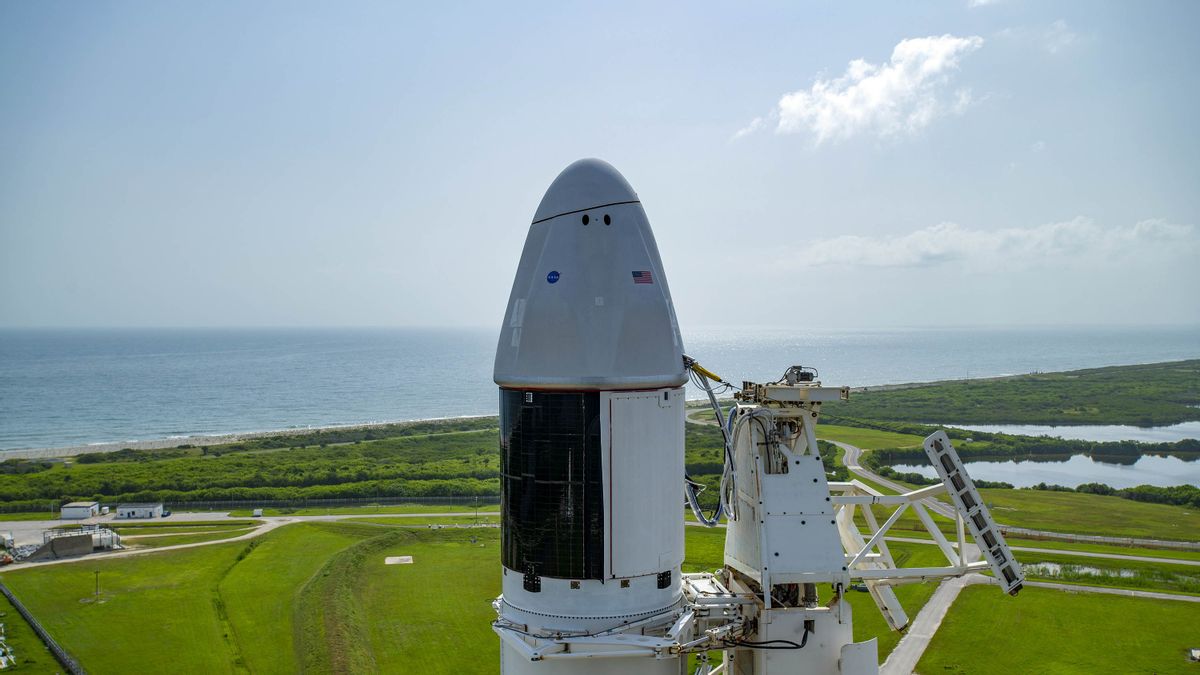JAKARTA - Demand for oxygen to treat COVID-19 patients in the US surged during the latest wave of the pandemic. This creates a shortage of liquid oxygen for other purposes, including water purification and rocket launches. Moreover, when the liquid oxygen supply is diverted to hospitals, other industries are scrambling to find alternatives.
"We're really going to be impacted this year by a lack of liquid oxygen for launch," said Gwynne Shotwell, president of SpaceX, earlier this week. "We will of course make sure the hospital will have the oxygen they need, but for anyone with a liquid oxygen reserve, send me an email."
While oxygen is very common in the atmosphere, hospitals need high concentrations to treat patients with damaged respiratory systems, such as people with severe cases of COVID. In the US, getting high concentrations of oxygen from one place to another is usually achieved by cooling the gas to a liquid, which is not very large but can cause problems of its own.
Earlier this year, there was a shortage of liquid oxygen at a Los Angeles hospital when the equipment used to convert liquid back into gas continued to freeze. Now, hospitals are inundated with COVID-19 patients so the increasing demand is causing problems outside of the medical industry.
Rocket companies like SpaceX often use liquid oxygen as a propellant. During the launch, it reacts with the fuel to send the spacecraft soaring. If the shortage persists, it could possibly delay the launch. But luckily that hasn't happened yet. "This is a risk, but not yet a limiting factor," SpaceX founder Elon Musk said on Twitter.
This shortfall also puts indirect pressure on other parts of the aerospace industry. Gas suppliers to the United Launch Alliance are now focused on addressing Florida's dire oxygen situation, a move that could change plans for a satellite launch next month, SpaceNews reports.
Meanwhile, in Florida, some residents have seen and in some cases, smelled - evidence of a lack of liquid oxygen in their water supplies. Water utilities use liquid oxygen to make ozone. When ozone is used to treat water, it can destroy harmful bacteria and viruses, and break down compounds that can make water taste or smell bad. Chlorine and other chemicals can perform the same function, but oxygen has fewer by-products.
In Orlando, shortages have led local utilities to ask residents to stop watering their lawns and conserve water in a bid to extend the supply of liquid oxygen.
Unfortunately, the utility saw only a "moderate reduction" in water demand, according to an update posted on August 25. Residents cut usage from 90 million gallons per day to 82 million gallons per day, but the utility's goal is to pump only 50 million gallons per day "until LOX supplies return to normal in Central Florida."
In Tampa Bay, the Municipal Waterworks has started using bleach instead of oxygen to treat its water. Utilities usually use oxygen to remove hydrogen sulfide, a gas that smells like rotten eggs, from their water.
In switching to bleach, the utility warns that "consumers who are sensitive to taste and smell changes to drinking water may see little change during this period" although quality and safety remain unchanged.
According to CNN, Florida has the highest rate of COVID-19 hospitalizations in the country. In Tampa in particular, emergency rooms were so crowded with COVID patients that they had to wait 12 hours.
The English, Chinese, Japanese, Arabic, and French versions are automatically generated by the AI. So there may still be inaccuracies in translating, please always see Indonesian as our main language. (system supported by DigitalSiber.id)











